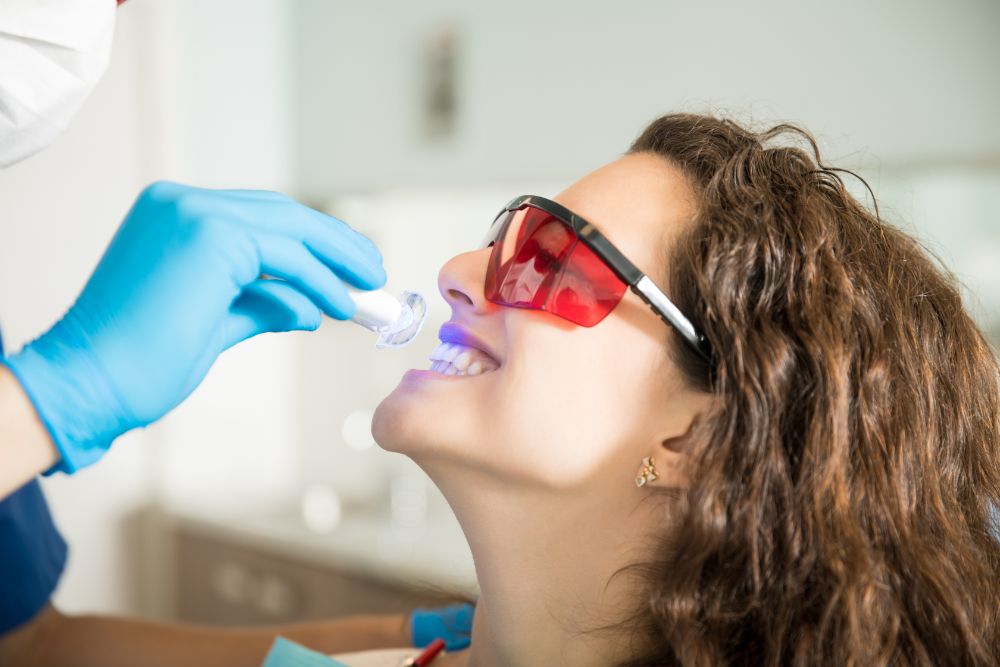White spots on teeth after whitening can be a common concern among individuals seeking a brighter smile. While teeth whitening procedures are generally safe and effective, the appearance of white spots can leave some individuals feeling disappointed or worried. In this article, we will explore the causes behind these white spots and discuss various treatment options to address the issue. Whether you’ve recently undergone a teeth whitening procedure or are considering one, understanding why white spots occur and how to prevent and treat them can help you achieve the smile you desire while maintaining optimal oral health.
Understanding Teeth Whitening and its Effects
Teeth whitening is a popular cosmetic dental procedure designed to remove stains and discoloration from teeth, resulting in a brighter and more attractive smile. The process typically involves using bleaching agents, either in the form of hydrogen peroxide or carbamide peroxide, to break down the pigmented molecules that cause staining. However, despite its effectiveness, teeth whitening can sometimes lead to the appearance of white spots on the enamel.
Causes of White Spots on Teeth after Whitening
- Enamel Hypoplasia: Enamel hypoplasia is a condition where the enamel does not fully develop, resulting in thinner or weaker enamel. This can make teeth more susceptible to white spots after whitening treatments.
- Demineralization: Demineralization occurs when the minerals, such as calcium and phosphate, are lost from the tooth enamel. Whitening products that contain high concentrations of hydrogen peroxide can potentially cause demineralization, leading to white spots.
- Fluorosis: Fluorosis is a condition caused by excessive intake of fluoride during tooth development. In severe cases, it can cause white spots or streaks on the teeth. Teeth whitening procedures may exacerbate the appearance of white spots in individuals with fluorosis.
Treatment Options for White Spots on Teeth
- Remineralization: Using fluoride-based products, such as toothpaste or mouthwash, can help remineralize the enamel and reduce the appearance of white spots. Regular brushing and flossing, along with maintaining good oral hygiene practices, can aid in the remineralization process.
- Microabrasion: Microabrasion is a minimally invasive dental procedure that involves removing a thin layer of enamel to eliminate white spots. This procedure is typically performed by a dentist and may be combined with other cosmetic treatments, such as tooth bonding, to achieve optimal results.
- Dental Veneers: For individuals with severe or persistent white spots, dental veneers can be a viable option. Veneers are thin shells made of porcelain or composite resin that are placed over the front surface of the teeth, effectively covering any imperfections, including white spots.
Preventive Measures for White Spots on Teeth
- Consultation with a Dental Professional: Before undergoing any teeth whitening procedure, it is essential to consult with a dental professional who can assess your oral health and recommend the most suitable whitening method for you. They can also provide guidance on how to minimize the risk of white spots.
- Moderate Whitening Products: Using whitening products with lower concentrations of bleaching agents or opting for professional in-office treatments can reduce the likelihood of developing white spots. It is crucial to follow the instructions provided and avoid overusing whitening products.
- Maintain Good Oral Hygiene: Practicing proper oral hygiene, including brushing your teeth twice a day, flossing daily, and using fluoride-based products, can help maintain the health and strength of your tooth enamel. Regular dental check-ups and cleanings are also essential to monitor your oral health.
Learn to Manage White Spots on the Teeth for a Better Oral Health
White spots on teeth after whitening can be a temporary side effect of the procedure. Understanding the causes and treatment options can help you address this concern effectively. By following preventive measures and maintaining good oral hygiene, you can enjoy a vibrant and healthy smile post-whitening.


